Field trip on circular economy in the Netherlands – travel report
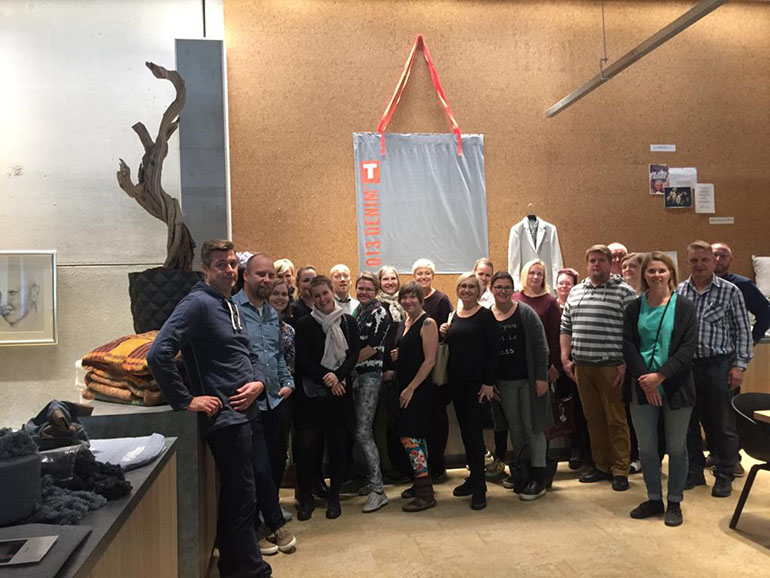
When? 8–9 October 2018
Where? In the Netherlands: Amsterdam – Wormerveer – Haaksbergen – Deventer – Tilburg – Amsterdam
Who? 23 participants from Finland, nearly half representing an organization connected to Telaketju one way or another
Organized by Finnish Textile & Fashion
We met at Schiphol Airport in Amsterdam on Monday morning. From there, we travelled to Wormerveer as guests of Circle Economy. A representative of Circle Economy talked about their Textiles Programme on circular economy research and cooperation with different operators. We learned that while more and more clothes are being purchased, clothes are also worn for a shorter period of time before being discarded. Only 1% of textile waste can be used for “high value” end products. The cooperative’s key goals for the Textiles Programme are to develop the market and the Fibersort identification system. In addition, they are studying the obstacles of textile recycling and thinking about ways to boost retail trade and brands. We visited the textiles sorting plant of Wieland Textiles. The plant conducts two-phase sorting by first manually sorting saleable items from the rest and then mechanically sorting recyclable materials with the Fibersort system developed by Valvan Baling Systems. In the Circle Economy presentation, we learned about the development of Fibersort, a project that started nearly a decade ago. Circle Economy coordinates the Fibersort project alongside other circular economy projects.
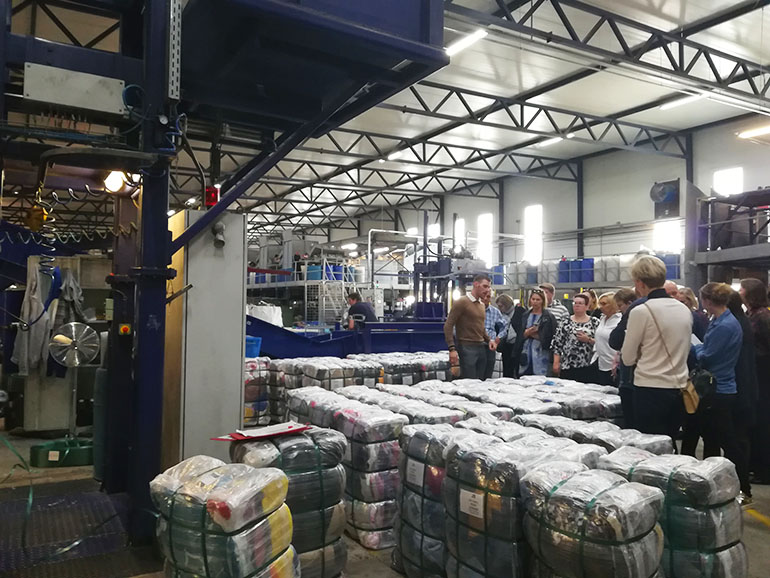
Wieland receives about 200 tonnes of consumers’ textile materials from the area in one week for the price of EUR 0.4 per kilogramme. Sometimes, the materials are ruined, such as wet or dirty, whereupon compensation is requested. All the lorries/bin lorries delivered to the area are weighed and registered. At Wieland, the manual sorter decides whether a product is usable and saleable or whether to forward it to recycling, i.e. to the Fibersort machine for identification. In manual sorting, the handling of saleable materials includes a number of steps. First, the clothes are sorted by type (e.g. men’s trousers), then by subtype (jeans, smart trousers, slacks, etc.) and then by condition and quality. The saleable items with the best quality end up in the European market and the larger batch consisting of second-rate items is baled into smaller packages and delivered to the African market. At the moment, about 60% is reused and about 40% recycled and incinerated. The impact of fast fashion on quality has been observed in the sorting; increasing numbers of items end up in the recycling pile to be inspected by Fibersort.
Fibersort identifies textile products according to fibre type. Products know to be challenging for the NIR identification, such as multi-layered clothing, are removed in manual sorting. Fibersort sorts the textiles into 14 fractions based on their fibre content, some of them 100% materials (wool, cotton, polyamide, polyester and acrylic) and some different mixtures, such as polyester-cotton textiles with varying ratios, as well as wool-acrylic mixes. At the moment, the system’s capacity is about one garment per second. However, the critical factor is not the NIR identification (0.3 seconds) but the manual input of the garments into the system. Automatic input is being developed for the system, and the plan is to increase the number of fractions to up to 50 according to fibre contents and colour.
From Wormerveer, we travelled to Frankenhuis in Haaksbergen. Frankenhuis is a plant for the machine-sorting of end-of-life textiles. We first heard an introduction where the owner openly talked about certain challenges and requirements in textile recycling. The main themes were that they accept materials with clear further use for recycling (automotive and domestic appliance industries), which means that they do not accept all types of end-of-life textiles. In addition, the owner explained that the market needs to pull, not just push. A good example is their cooperation with a large energy company which gave them 15 years to develop recyclable uniforms for the company. Recycling must be included in product design and, as a result, the entire chain!
Consumers’ end-of-life textiles are challenging as materials, and the equipment capacity of Frankenhuis is only able to find the financial processes and markets for a limited number of fibre fractions. The larger of the two systems in Frankenhuis includes the removal of hard parts and can only be used to manufacture large batches of raw materials. Manufacturing smaller batches is not profitable for the production. The smaller system is able to manufacture smaller batches, but the hard parts of the items must be removed from the products before processing.
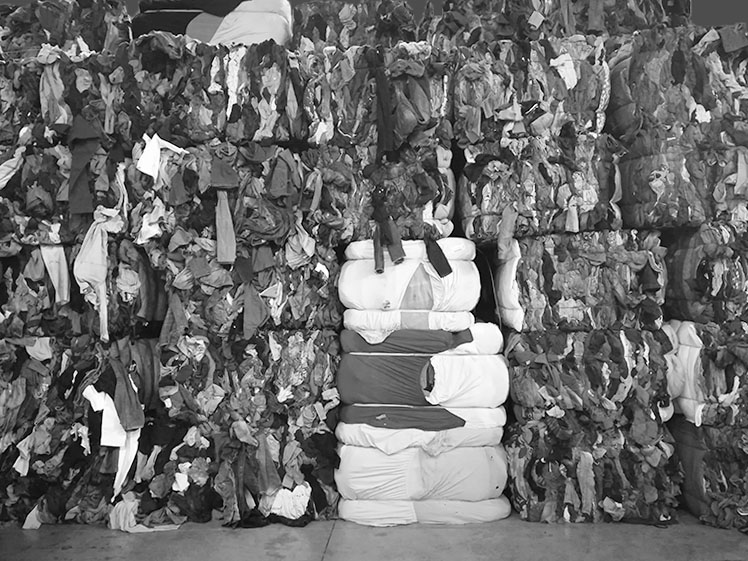
Due to its refinement equipment suited for large volumes, Frankenhuis specializes in serving the automotive industry. Mixtures with different fibre compositions are required for the various vehicle parts using recycled textiles, and suitable fractions are purchased from textile sorting plants. Knits and denim are fed into the process as raw materials. Knits and woven fabrics are kept separately as opening them in the system requires different type of processing. Different fabrics also require different amounts of work, meaning that opening jeans in the system results in denim threads that have already defibered while the pockets, made of thinner thread, still hold their form as scraps of fabric. According to Frankenhuis, acrylic, although shunned by many consumers, is very recyclable; acrylic knits are easy to open and manufacture into new textile products. Another interesting fraction used in the Frankenhuis process is the second-rate products of the tampon industry and the viscose fibre in them.
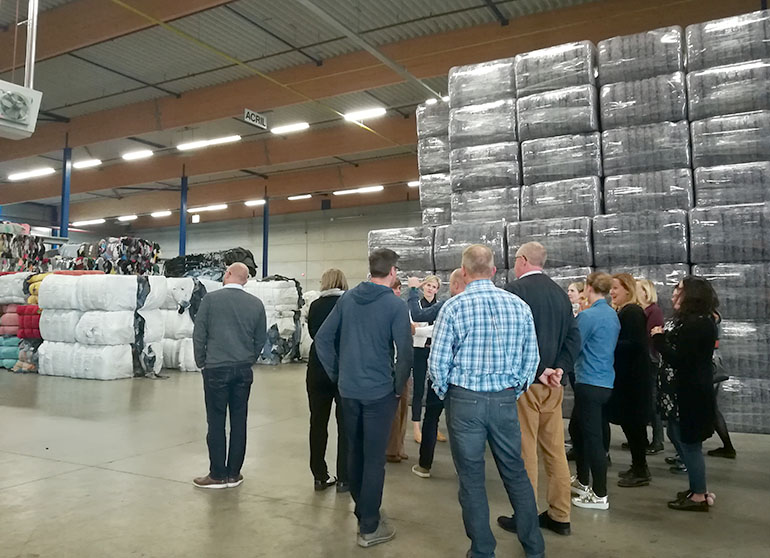
After our group absorbed as much information about recycling as we could, we travelled to Deventer for the night, and next morning, headed to the local Auping bed factory. Established over a century ago, Auping specializes in bedroom solutions and has lately adopted responsibility as a key priority. They have recently developed a “sleep as a service” concept in which the customer rents the bed and mattresses for their own use. When the products reach the end of their service life, Auping reclaims the used products and replaces them with a new bed and mattresses. Their new bed model, launched in 2014, is recyclable and has the Cradle to Cradle certificate. The company observes recycling in their other products as well; the reception of mattresses started years ago and the products are dismantled by a cooperation partner into metals, wood and other fractions. Even though the company does not accept bed linen or pillows yet, responsibility is taken quite comprehensibly into account in the company’s operations. The factory utilizes natural light and produces electricity with solar panels; dust is efficiently removed when processing wooden parts, eliminating the need for respirators; the collected sawdust can be manufactured into briquettes for the heat production of the drying plant; the scraps of the sewing shop are used to manufacture smaller parts and decorative pillows; instead of zips, decorative cushions use an inner pillow filled with ground waste materials from the production which is covered by a pillowcase. Just to mention a few…
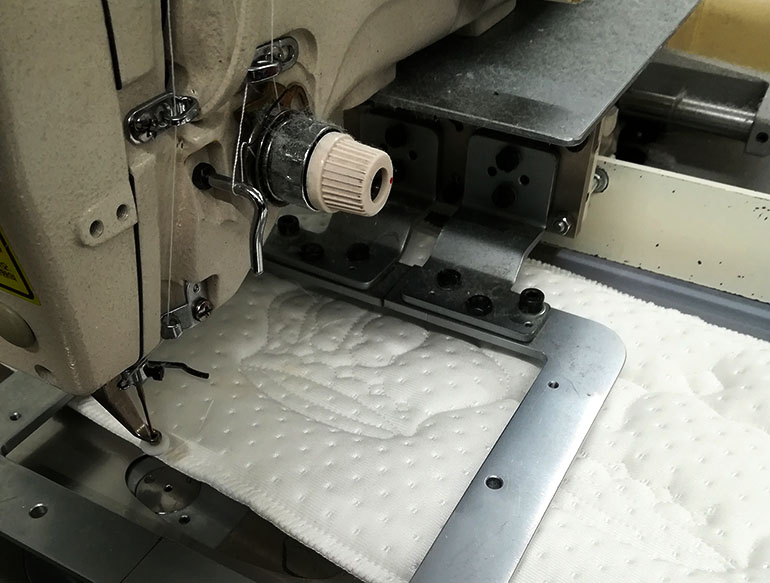
From Deventer, we continued to lunch and then Tilburg where we learned about the operations of Philtex and Wolkat. We started at the plastic recycling warehouse of Philtex. The polyester ropes and polypropylene sacks are made of recycled materials which Philtex usually adds to new plastic in different rations, depending on the product. Products made almost completely of recycled materials are also possible with Philtex’s processes, as demonstrated by a campaign where the company recycled Heineken’s beer festival pints. The amount of new materials and additives stayed at a few per cent, but the small addition of additives enabled nearly limitless recycling of pints.
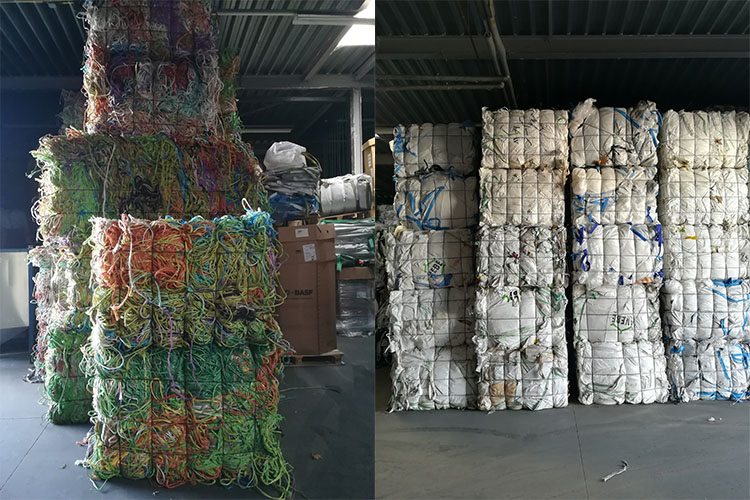
The textile recycling of Wolkat, a member of the same Group, was also an impressive operation. The company makes yarns and blankets with European consumers’ end-of-life textiles constituting about 90% of their materials. Small amounts of new raw materials are often added to the recycled materials to achieve the desired properties. Slightly surprisingly, we learned that Wolkat specialises in post-consumer materials because there is already too much competition in the recycling of pre-consumer materials. Of course, Wolkat has also made exceptions, such as the collaboration with Nike for recycling 100% polyester sports gear left over from stores.
With its nine companies operating in three countries, Wolkat controls a large part of the production chain. European end-of-life textiles are manually sorted and recycled into new materials in Morocco. Professional sorters sort the materials by fibre type and colour and manually remove any hard parts. The fibres are used for various purposes; the product selection include thin and thick open-end spun threads, and shorter fibre fractions are made into nonwoven fabrics and felt products. Thanks to colour sorting, the colour selection is impressive without the need to dye the materials. The fibres are only treated with dressing sizes to ease the processing and keep the water consumption below 100 litres per 1,000 kg of new product.

After the visits, we headed back to the Schiphol Airport, our heads buzzing with new ideas. In a way, it was comforting to see that the Netherlands are not much more advanced in the utilization of large masses than Finland. Large volumes of recycled materials need a purpose, such as the automotive industry in Germany. What appears to be common between the Dutch operators and the participants of Telaketju is a vision of a changing situation and the necessary change in the consumption system; sustainability and responsibility will take centre stage in the future. The visit also clearly indicated that the long life cycle of a product following circular economy and its recyclability start with design and high original quality. In addition, increasing recycling does not automatically mean that all new products must be 100% recycled; it means that post-consumer waste, in particular, can be utilised as small additions in new materials. It is also comforting to know that post-consumer materials are highly usable in both garments and technical products. An excellent example is the use of insulation made of consumers’ end-of-life textiles in the highly regulated construction industry due to the manufacturer Le Relais Métisse® and its dedication to work hard to gain approval for the materials.
Pirjo Heikkilä, Satumaija Mäki, Henna Knuutila and Inka Mäkiö
